Notes on cameras.
Why Gear is Important and Why it Doesn’t Matter
One question photographers, teachers etc get asked is “What camera?” First up I want to say that to make photographs it doesn’t matter one little bit what camera you use. Film, digital, compact, 35mm, medium format, large format, phone, pinhole, it doesn’t matter. Just pick it up and use it. Having the latest and greatest won’t make you a better photographer, nor will it help you with creativity. It won’t make you a better story teller and it won’t help you create narrative, or see light or any of those things. Cameras don’t make photographs, people do. However, we live in complicated times, it’s a topsy-turvy World we live in, money is tight and I think it’s worthwhile to arm yourself with as much knowledge as possible.
Over the years I’ve heard photographers say that they don’t care about cameras, only photography itself. I accept that. It sounds good. The medium itself is the most important thing not the camera but really there’s no excuse – we live in an information age. This sentiment may earn you brownie points among purists or hipsters but really, it’s just waffle. It’s a good way for the speaker to get some approving nods.
I once spoke to a photographer who proclaimed quite proudly to not know the model of her camera as she said – it isn’t important. Well, to take photographs it isn’t. But to make the right camera-buying choice, taking into account your budget, your commitments etc you probably should know. Despite the relatively low cost of film cameras these days, I simply couldn’t throw money at a cameras who’s name or model I couldn’t even remember or didn’t know in the first place.
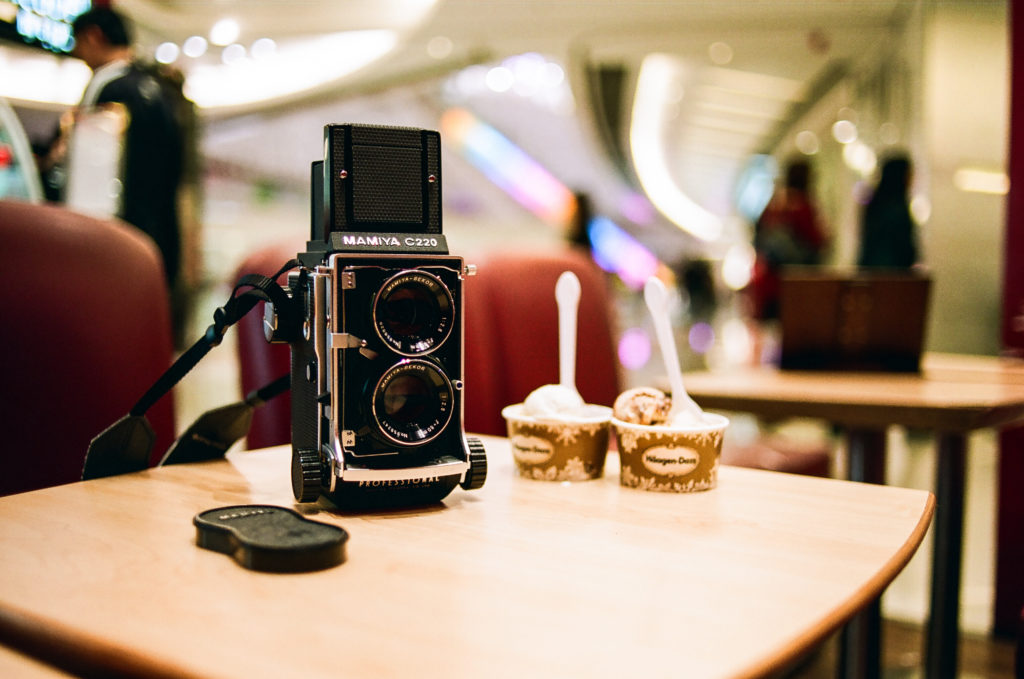 Mamiya C220 [Nikon FM2 / Fuji Reala]
Mamiya C220 [Nikon FM2 / Fuji Reala]
Buying a camera, regardless of how little it might cost requires an important decision-making process. You will use it to make photographs, the act of which will take up hundreds if not thousands of hours of your precious time. For this to be worthwhile undertaking you’ll need to understand what you’ll be making those photographs with. As with anything else, you’ll want to use the right tool for the job.
Knowing Your Equipment
I think knowing your equipment is important. To get the most out of your camera and the 100 plus years of technological evolution that went into making the film you put in it you need to be aware of what your camera can and can’t do well.
For instance, let’s say you’ve heard all about the legendary Hasselblad and the amazing Zeiss glass or you love the idea of using the Rolleiflex and you’re interested in taking photos on crowded streets and busy market places, in bustling sub-ways or at protest marches. If you plan to combine either of these two cameras with this style of shooting it’s important to know that the image through the ground glass focussing screens of these cameras will be ‘flopped’ – that is, inverted on a vertical axis and that the Hasselblad Zeiss glass has a long focus throw making it relatively slow to work with.
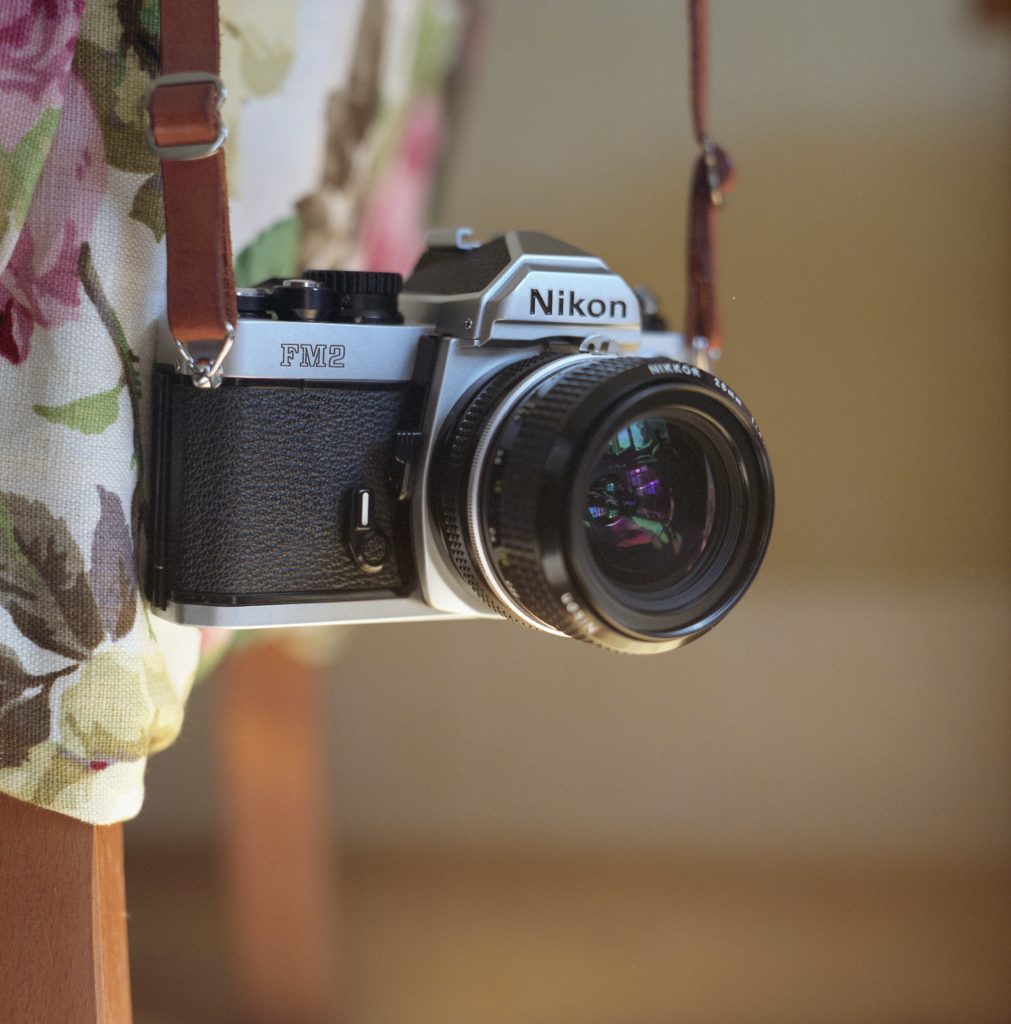 Nikon FM2 [Mamiya C220 / Fuji Superia X-TRA 400]
Nikon FM2 [Mamiya C220 / Fuji Superia X-TRA 400]
None of the above would be strictly prohibitive but surely these are things you’d need to be aware of and knowledge that goes far beyond the make and model of a camera.
Lenses
Lenses too have idiosyncrasies that make them job specific. For example the Nikkor 85mm ƒ/1.8 AF-D is horrible shot anywhere near its minimum focussing distance. It’s soft and exhibits low contrast – generally pretty awful. Double the distance to the subject however and it comes into its own. This lens is clearly optimised for portraiture.
The Nikkor 24mm ƒ/2.8 AF-D flares horribly when shot into the sun. Small, sharp and harsh flare, but if you already know this you can try to use it creatively or at least you won’t get any surprises when you develop your negs. It also distorts quite badly – complex or barrel distortion that’s hard to correct. Apparently the corners are soft wide open and there’s significant light fall-off as well. But then I’ve never been one for pixel-peeping. I’m usually having too much fun shooting.
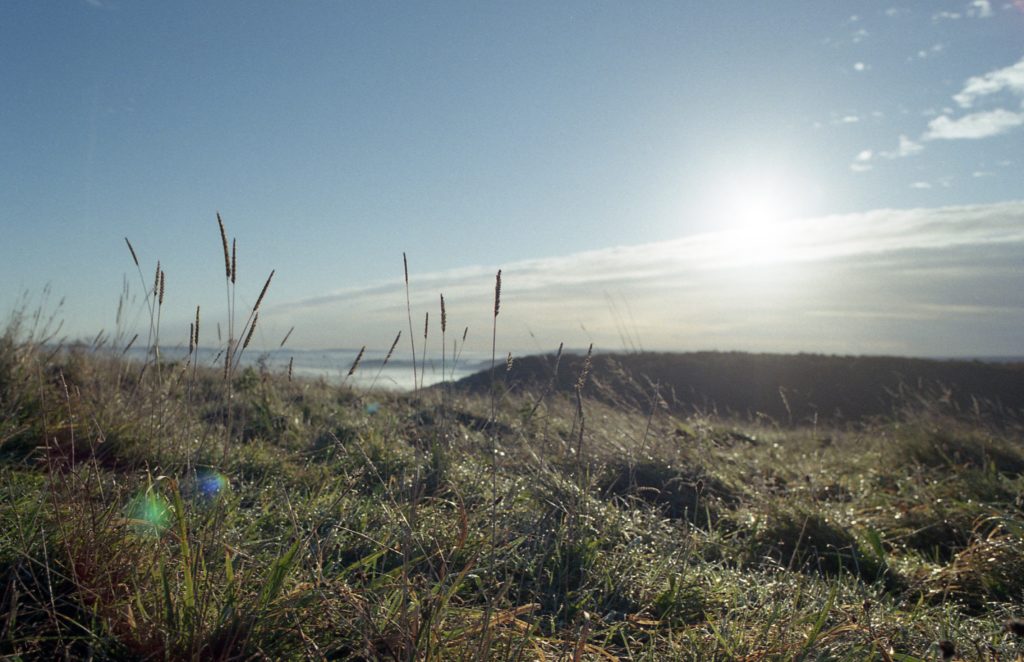 Nikon FE2 | Agfa Vista 200 | Nikkor 24mm ƒ/2.8 AF-D
Nikon FE2 | Agfa Vista 200 | Nikkor 24mm ƒ/2.8 AF-D
I shoot into the sun quite a lot. I like the dreamy, backlit ‘contre-jour’ look (I apologise to any native French speakers who are miffed at my containing some of your perfectly suitable words in commas). The 80mm Seiko for the Mamiya C220 produces a very distinctive circular, ‘rainbow’ flare when shot into the sun. The kind of flair that will have your Photo Editor throwing your prints into the bin. But I know this and I work with it, I even quite like it. Whenever I shoot into the sun using this camera and lense I’m aware of that fact I’ll likely get some lense flair. Lots and lots of it.
Zooms or Primes
I use primes. I owned a zoom lens once that I used during my backpacking days as I thought it would save weight/space etc. I should have just taken a 24mm and 35mm. It was stolen in Vietnam and not replaced.
I use primes for a number of reasons. They’re cheaper than zooms, they are nearly all fast – ƒ/2.8 at least except for some medium format lenses, and they’re lighter. I have never missed having a zoom lens. I think using primes takes away another mostly unnecessary decision you have to make when making a photograph, simplifying the process. It also forces you to learn about the perspective of standard focal lengths. I can’t really think of any good reasons for me to shoot with zooms other than some added convenience.
Gear Acquisition Syndrome
Everyone suffers from bouts of GAS (gear acquisition syndrome) at some point. We’re only human and it’s understandable. But I think buying up cameras for the sake of it or for the purpose of collecting isn’t the best thing to do – buying cameras in order to learn from the experience of using them is a really great thing to do.
There are no 35mm SLR cameras currently in production except for the Nikon F6 which is still listed by Nikon (although no one seems to know if it’s actually still made or not) and the Cosina-made Nikon FM10. Neither of which are readily available and are possibly old stock, almost certainly in the case of the F6.
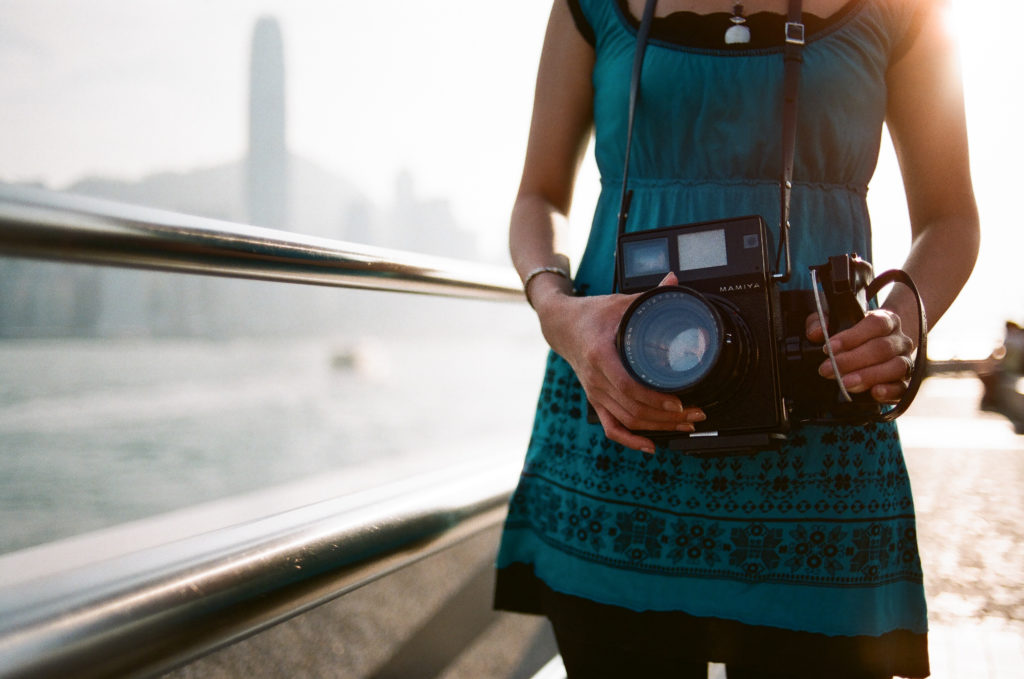 Mamiya Universal Press / Nikon FM2 / Nikkor 24mm ƒ/2.8 AF-D / Fuji X-TRA 400
Mamiya Universal Press / Nikon FM2 / Nikkor 24mm ƒ/2.8 AF-D / Fuji X-TRA 400
With no new cameras being made at some point all cameras at some time in the future will stop working. If you own a particular system it’s worthwhile to invest in redundancy to safeguard your film photography future. I use Nikons and I own the following: FM2, FE2, F801s, F90X, F-100. The FM2 was my first, the FE2 I saw on ebay and just wanted it and all the rest I got for good prices and are ideal back-up bodies should any of the others fail. The Nikon F90X (+grip) I bought for 900HKD with an SB-26 speedlight and a Ricoh TF-500 thrown in for good measure. Honestly, I bought it for the flash but was happy to have a spare body especially one as good as the F90X.
Buying these just to have a set or to build a collection is pretty pointless but having back-up bodies puts my mind at ease.
Up until a few years ago I’d only used 35mm SLRs and compacts with any regularity. Moat of the other systems – medium format SLRs, TLRs, rangefinders, press cameras, as well as 6×4.5, 6×6, 6×7, 6×9 formats were fairly mysterious to me. Over the last ten years or so I’ve systematically and deliberately built a ‘collection’ in order to advance my knowledge of cameras and thus photography. It’s not GAS, honestly. Ok, I suffer from GAS but as long as you’re not robbing from your mother like Zammo from Grange Hill to pay for it you’re all right. As film photographers why shouldn’t we benefit from the mess that digital has created.
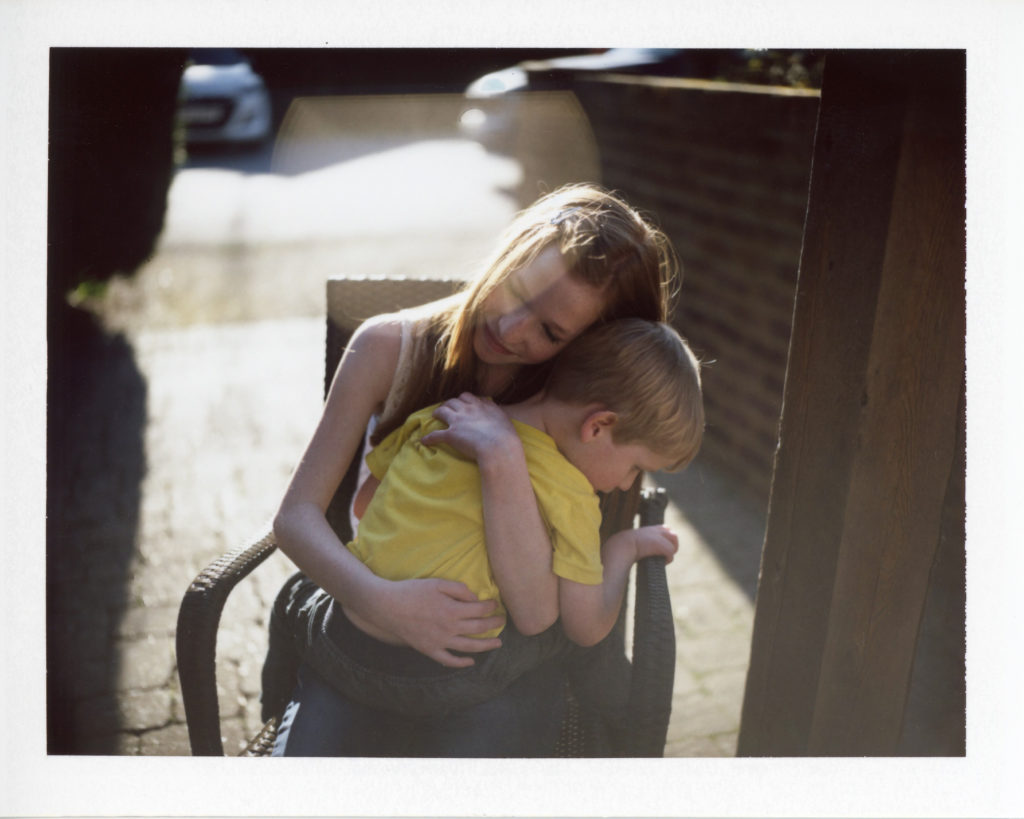 Mamiya Universal Press / Fuji FP-100C / 100mm ƒ/2.8 / Polaroid Back
Mamiya Universal Press / Fuji FP-100C / 100mm ƒ/2.8 / Polaroid Back
The marketing departments of camera companies do a remarkable job of convincing their customers of the need to upgrade their cameras. It started probably during the 70’s and 80’s with the competition between Nikon and Canon although major advances in technology were being made at the time that allowed photographers more luxuries – autofocus, matrix metering, automatic film advance etc were all major developments in their day but probably didn’t require the average shooter to rush out and buy a new model. Similarly, a bigger sensor, more megapixels, faster AF, more AF points, extra metering modes and the ability to shoot 10 frames per second are not good reasons to upgrade a perfectly good camera.
Owning a Mamiya or a Hasselblad was just a dream for me 15 years ago, now it’s become a reality. Anyway, enough about GAS – this is how I justify my camera purchases, so there.
Which Cameras?
There are few things in this World that excite me more than shooting film. Trying out a new film or camera for the first time adds another layer of excitement. I’m always on the lookout for films and cameras I haven’t used. Ideally I would like to try every camera at least once, realistically this isn’t going to happen and I’ve no intention of making it happen.
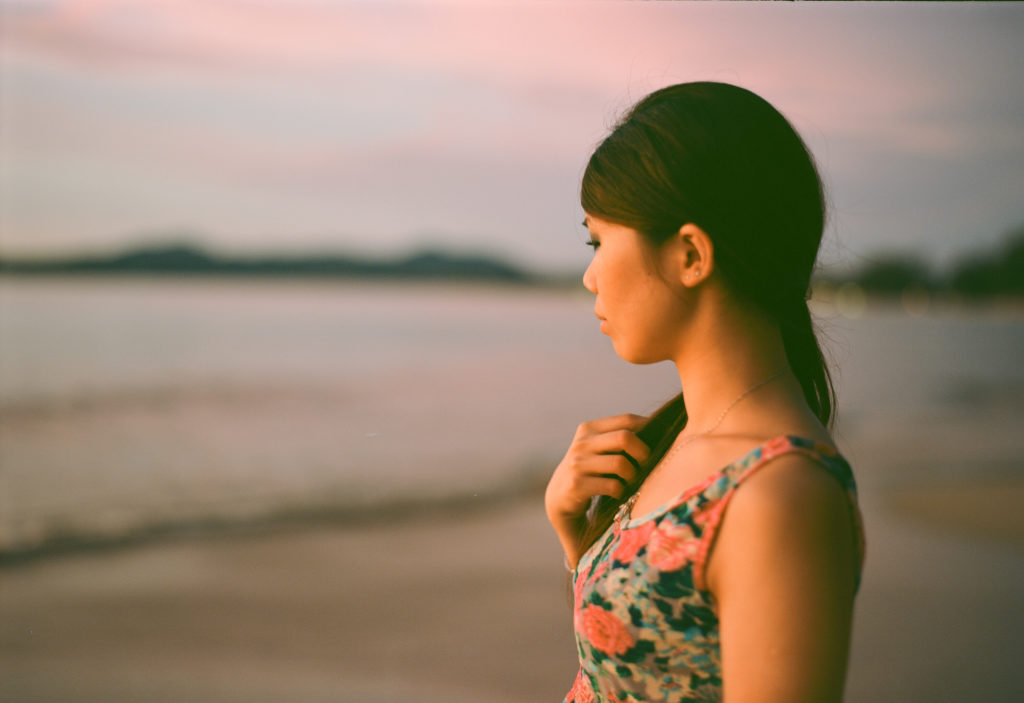 Mamiya Universal Press / Kodak Ektar 100 / 100mm ƒ/2.8 / 6×9 back
Mamiya Universal Press / Kodak Ektar 100 / 100mm ƒ/2.8 / 6×9 back
My interest in certain cameras has been piqued by various things. The work of other photographers for instance. Some cameras come with a reputation but I try and avoid cameras that have a lot of street cred. The cool cameras. Cameras that come to mind that fit this bill – Contax T2, Yashica T, Fuji Klasse, Minolta TC-1, Leicas (all), Konica Hexar, Rolleiflex etc. All great cameras in their own right, but they’re very cool. Too cool for me.
35mm
My first ‘proper’ camera was a Nikon FM2. Mechanical – only the meter requires a battery – and manual. There are no automatic features whatsoever. I’ve used this camera ever since. I’ve since bought a number of Nikon bodies – cameras I used to lust after but could never afford but have since managed to acquire for reasonable prices and for the purpose of redundancy – they’re back-up bodies. They all get used. So, yes, I’m a Nikon user.
Nikon Vs Canon
It really doesn’t matter. Both companies make wonderful cameras and it was probably their rivalry that advanced camera technology at such a rate during the 70’s, 80’s and 90’s. The main reason I chose to use Nikon is because Nikon lenses all the way back to the late 1950’s are compatible with varying degrees of functionality with every Nikon body ever made, film or digital – the lens mount hasn’t changed. Canon changed their lens mount from the FD to the EOS system in 1987. For me this is a compelling reason.
I also own a Pentax MX and a Minolta XD-7. Before I bought these cameras I’d only ever owned a Nikon SLR so I wanted to see for myself what else was going on. Both of these are great cameras in their own ways and I’m glad I bought them but there’s no good reason to switch from one brand to to another. It’s fun to use different camera and lens combinations though.
Compacts
I use a few 35mm compacts. They’re useful for walking around with in your hand and snapping on the street and for taking on holiday. I’ve bought a few from fleabay for as little as 1GBP. It’s fun to see how well (or not) I can do with them and they’re generally fun to use.
 Olympus AF-10 Super / Fujicolor C200
Olympus AF-10 Super / Fujicolor C200
Again, I’ve stayed away from the sought after cool cameras like the Ricoh GR1, Fuji Klasse, Yashica T3/4/5, Contax T1/2 etc. I’ll give anything ago. I’ve used the Olympus AF-10 Super the most which I bough from ebay for 1.04 GBP and the Olympus XA. I will add a complete list soon and will add a link here when it’s done.
Medium Format
I only started using medium format cameras regularly around 10 years ago. The first medium format camera I owned was a Kodak Brownie Reflex 20 inherited from my Grandad. It uses 620 film – it’s the same as 120 except the spool is a slightly different size requiring you to sand it down to make it fit. Anyway, it’s fun to use.
Next I bought a Mamiya C220, considered a workhorse and a rather unsexy camera. It’s fairly big and boxy and not as sexy or sought-after as the Rolleiflex and probably not even as sexy as the Yashicamat 124G or the Minolta Autocord but arguably as capable if not more so than any of the above. For me it was the obvious choice.
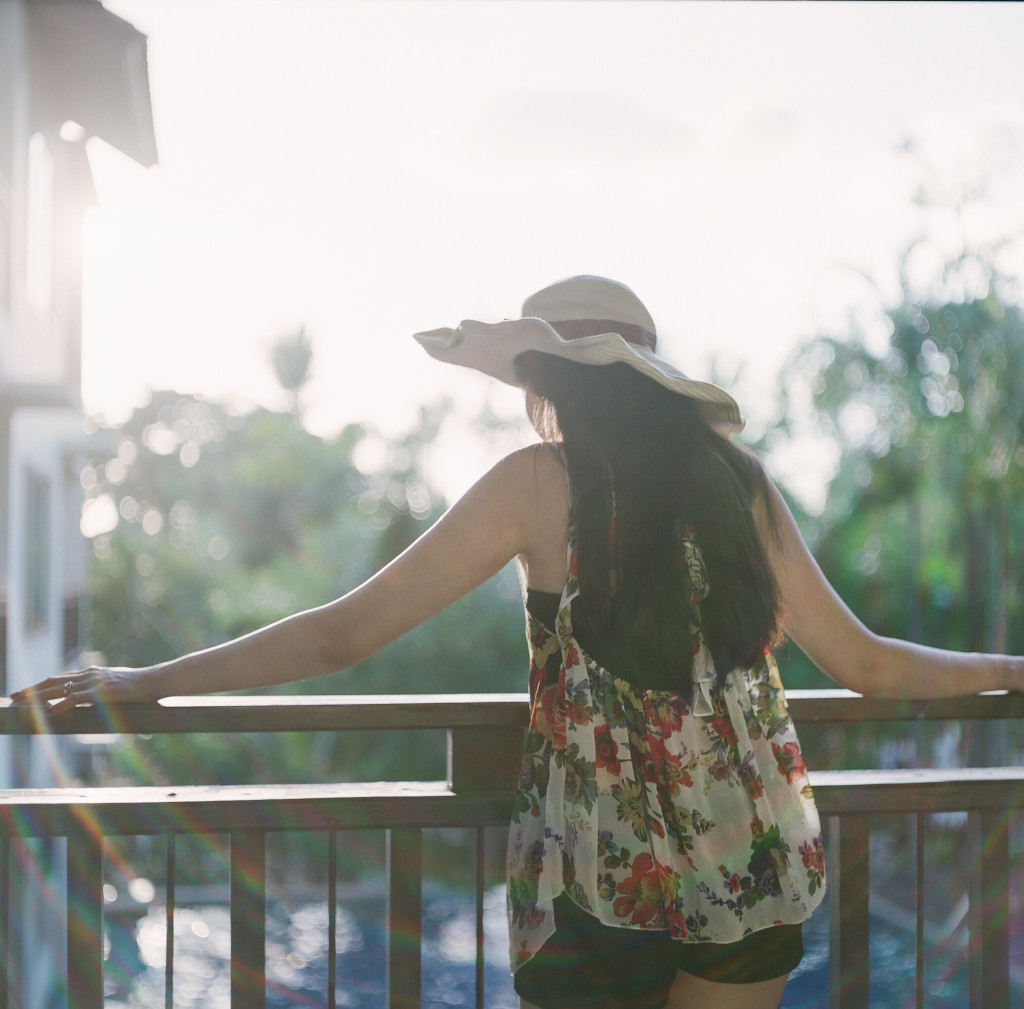 Mamiya C220 / Fuji Reala 100 / 80mm
Mamiya C220 / Fuji Reala 100 / 80mm
I found a minty fresh version on ebay for about £200, I had the lens serviced and have been using it ever since. For the price of a mid-range digital compact I’ve had over 10 years of hassle-free medium format photography – great value.
I’ve since acquired a number of medium format cameras, a range finder, an SLR and a Holga. All for the purpose of my, ahem, continued education.
Toy Cameras
I don’t believe ‘Lomography’ is a thing. It’s a marketing gimmick. Making photographs on a Nikon isn’t called ‘Nikonography’, is it? Toy cameras are things though. Cheaply made, expensive to buy things.
The only toy camera I think is, or was (they’re no longer produced) worth the money was the Holga. I bought mine for around 200HKD. The Holga isn’t made by Lomography. I quite like the look of some Lomography-made cameras – the LC-A/W has distinctive look. I had one until recently. It was dropped once from below waist height and has stopped working. I bought a Diana mini but it malfunctioned through normal use.
I don’t really recommend any other Lomography cameras. I think they are poor quality, are likely to fail and are overpriced. But I think Lomography have a job to do. They are helping keep film alive and are introducing film photography to a new generation of photographers – great news.
So, there’s some waffle on why I use the cameras that I do.
I’d love to hear your reasons for using the cameras you do or any insights into this subject. Get in touch! If you’d like to comment on or correct anything I’ve written then please do.
Cheers, Matt
